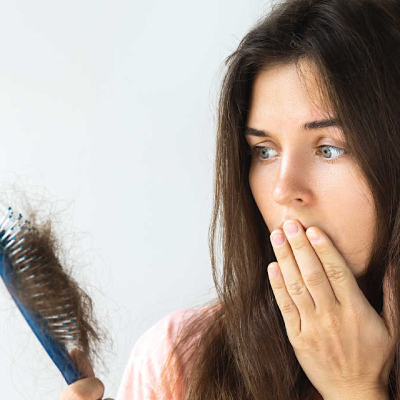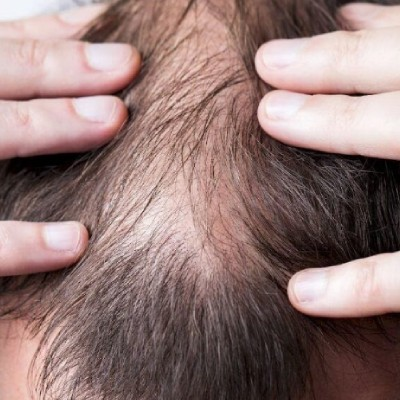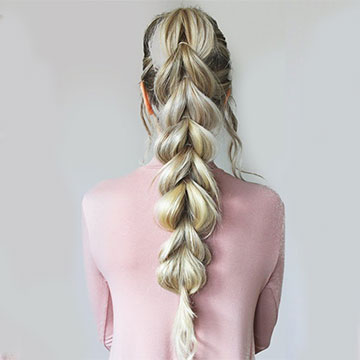How to Fight Traction Alopecia?

09 September 2019

Hair Experts @ AHS

Traction alopecia occurs when your hair is being pulled in the same way for a long time. Traction Alopecia can happen to people who wear their hair pulled back tightly, whether in a ponytail, braids, or dreadlocks. It can also occur if you are using tight headwear every day in the same way.
What is Traction Alopecia?
Traction alopecia occurs when your hair is being pulled in the same way for a long time. It can happen to people who wear their hair pulled back tightly. It can also occur if you are using tight headwear every day in the same way.
Recurring strain on the hair follicles pulls out strands of hair and even damages the follicles. This causes itching, redness, and even can produce infections or ulcers.
What Causes Traction Alopecia?
Traction Alopecia is caused when you wear the same hairstyle for extended periods of time. This rings especially true for hairstyles that are tight, as it can cause damage to your hair. You can develop Traction Alopecia if you style your hair in the following ways:
- Braids
- Weaves
- Cornrows
- Tight buns and tight ponytails
The hair is pulled constantly in such hairstyles, leading to your hair follicles becoming loose. Interestingly, those with very long hair can also get Traction Alopecia as the weight of hair pulls on the scalp. Not just hair, but a heavy beard can also experience the same if it is twisted too tightly! Repeated use of rollers to set hair is also harmful and can cause Traction Alopecia.
How Do You Know If You Have Traction Alopecia?
Alopecia is a form of hair loss, so one of the most glaring symptoms would be hair loss. But then again there is a method to the madness of this hair disease. That means that it will always start off with some other symptoms until finally leading to your hair loss. So if your scalp is red, or you have bumps, then this could be a sign of Traction Alopecia.
You can also know that you have Traction Alopecia if you have soreness or stinging on the scalp, scaling, itching, or even blisters full of puss. Other signs are short, thin, bald spots and broken hair. It can happen anywhere along the hairline and is quite common near the temples.
Common Symptoms of Having Traction Alopecia

- A pulling sensation
- Small bumps on your scalp
- Crusting
- Softness
- Harshness on your scalp
Signs of Traction Alopecia Include

- A receding hairline typically around the temples, nape or forehead.
- Small pimples appear at the base of braids or on the scalp.
- Itching, redness, and ulcers on the scalp
- The hair parting broadens
- Patches of broken or thin hair in places where the hair has been under strain
- Visibility of scraps of scarred and shiny skin in more advanced cases
How Long Does It Take Traction Alopecia to Grow Back?
Once the problem gets identified at an early stage then your hair has a chance to regrow. But you cannot repeat the same mistakes, as Traction Alopecia regrowth is a possibility. So if you are someone who has tackled the problem, then you are required to maintain healthy habits, such as not going back to your old hairstyle. Traction Alopecia can return sooner because your hair might still be a little weak.
So the best thing would be to do all you can to prevent it, such as changing your hairstyles; wearing loose braids; nothing should be too tight; do not go to sleep in rollers, and go easy on the heat setting on your blow dryers. You may need additional precautions depending upon your condition.
How to Prevent Traction Alopecia?

- Do not use artificial hair frequently.
- Keep changing your hairstyle more often.
- Wear loose braids especially around the hairline.
- Make sure your weaves, braids or cornrows are not too tight. If it hurts while your hair is being styled, ask the stylist to stop and redo it as it leads to damage.
- Do not use heat or heating objects often.
- Get dreadlocks or thick braids rather than thin ones.
- Use hair extensions only for a small amount of time.
- Change the pattern of twisted and braided hairstyles.
- Try to avoid sleeping in rollers.
- Use low heat settings on blow dryers and flat irons.
- If hair extensions are causing pain or irritation, take them out right away.
- Do not use elastic ponytail holders and rubber bands.
Can Castor Oil Help Traction Alopecia?
You would be surprised to know that castor oil is actually a popular laxative! But the oil is in massive demand when it comes to traction alopecia treatment. This is because castor oil has essential fatty acids that give your hair the much needed boost.
The oil has immense antiviral properties making it a popular choice for hair growth. Hair regrowth after Traction Alopecia is possible to a certain extent with the help of castor oil, but this is only supplementary.
Can Hair Grow Back after Traction Alopecia?
Most definitely it can, but you cannot repeat the same mistakes twice. So, you have to take care of your hair and scalp, and change your hairstyle. Also, it largely depends on the stage of Traction Alopecia, so the faster you can diagnose it, the better chances you have of hair regrowth.
What is the Treatment of Traction Alopecia?

Here are some steps to treat this condition:
- Avoid tight hairstyles if possible. If it is necessary for you to tie up your hair tightly because of your profession or something else, you must try to wear your hair as loosely as possible and wear the hair loose or down whenever possible.
- Limit or avoid chemicals, including relaxers. Avoid putting relaxers on already relaxed hair.
- Keep changing hairstyles: change your hairstyle every few weeks to prevent strain on one area of the scalp.
- Try hair restoration procedures if your condition has deteriorated - there are some amazing hair restoration procedures offered by Advanced Hair Studio.
- If you are going through common or severe hair problems and thinking of undergoing a hair transplant, come to Advanced Hair Studio. To get the best hair loss treatment, consult highly experienced hair experts at Advanced Hair Studio that has more than 300 branches all over the world and millions of satisfied clients.
Conclusion
Alopecia is a form of hair loss, which can be brutal in some cases. The best thing for you to do is to identify the issue at the start, and get treated. The best time is when you still have your head full of hair, and have not really lost a lot of hair yet.
Check if you have any scarring along with the hair loss, and this is a sign of cicatricial alopecia. The affected areas need immediate attention if you want your hair to grow back.
You can also visit a hair expert at an Advanced Hair Studio near you. We recommend that you undertake the Advanced Hair Check where our hair professionals will diagnose your Traction Alopecia condition and suggest an appropriate treatment.Stay Updated
Subscribe to our email newsletter for helpful tips and valuable resourses
Be an influencer
Join forces with Advanced Hair Studio! Explore exciting collaboration opportunities tailored for influencers. Let's redefine haircare together.
Connect now












